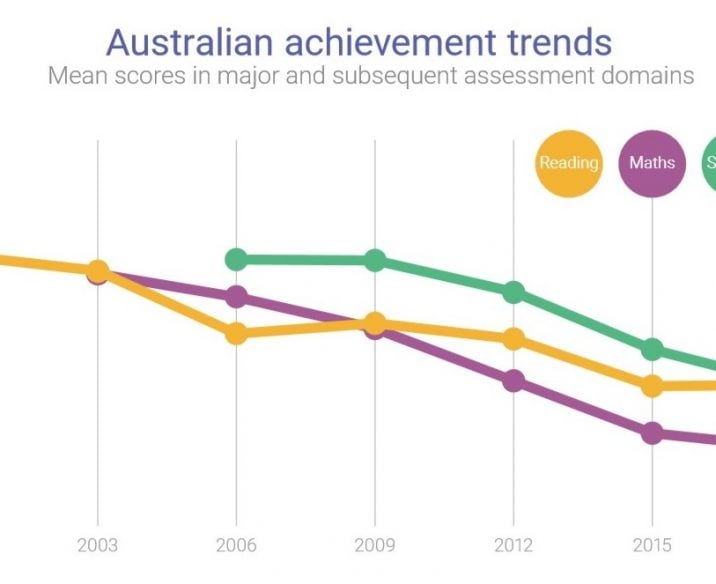
This week, The OECD Programme for International Student Assessment (PISA) results for 2018 were released. This global study of more than half a million 15-year-olds around the world measures the ability for students to use their reading, mathematics and science knowledge and skills to meet real-life challenges.
Australia’s results are a cause for concern. Since we started participating in the study in the year 2000, students’ mean performance has steadily declined in reading and maths, from initially high levels of performance. The 2018 results were the lowest to date.
In reading, only 59% of students met the national proficiency standard (compared to 69% in 2000) and in maths, only 54% met this standard (compared to 67% in 2013).
The report from the OECD highlighted challenges in the digital age as an increasingly important factor in students’ skill development. They said, “The rising bar of success in education in the digital age puts even greater pressure on education systems to secure strong foundations. There is a great risk that technology will super-empower those with strong knowledge and skills while leaving those with weak foundations further behind.”
While a decline in performance was observed from students of all levels, in reading, the more rapid declines were seen amongst the country’s lowest-achieving students.
This is in line with broader educational research, which shows that gaps in learning and ability open at an early age and continue to widen over time without support.
These insights and findings support Learning Links goal to empower children who have difficulties learning to build strong foundational literacy and numeracy skills. Without these foundations, students are at significant risk of falling further behind at school and facing disadvantage in the future.
“Unfortunately, the PISA study highlights a much broader problem with Australian students’ literacy and numeracy levels. Learning Links is committed to supporting disadvantaged students in our schools by providing targeted interventions to help them gain the skills and confidence to reach their full potential,” said Birgitte Maibom, Learning Links CEO.
“We support the use of systematic phonics instruction and were pleased to see the recently announced government initiatives to introduce phonics health checks for Year 1 students. Programs like this will help to identify students with gaps in their foundational literacy skills at a young age so the appropriate supports can be put in place before they fall behind. With the release of these results, we hope that students’ numeracy needs also become a priority,” she said.
Here are some of the key points from the 2018 PISA report:
- Students in Australia scored higher than the OECD average in reading and science
- Students in Australia scored close to the OECD average in maths
- Australia’s reading performance in 2018 was similar to what was observed in 2015, but when looking at the long-term trend since the start of the study, performance has steadily declined
- Based on socio-economic data, around 24% of advantaged students were top performers compared to only 6% of disadvantaged students
- However, students’ performance in reading, maths and science was less strongly associated with socio-economic status in Australia than on average across OECD countries
Infographic source: ABC News
